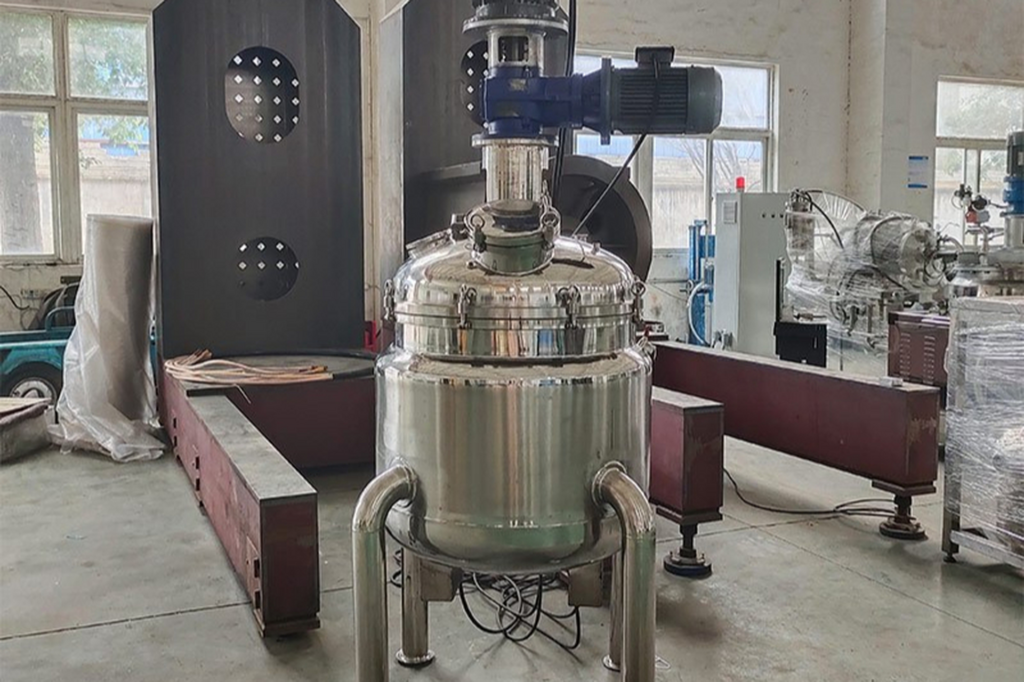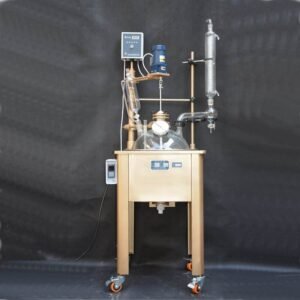A Technical Exploration of Pressure Handling in Equilrxnlab’s Stainless Steel Reactor Systems
The stainless steel reactor pressure range is a pivotal factor in determining the safety, performance, and applicability of chemical reaction systems across laboratory and industrial environments. This pressure range directly affects the type of reactions that can be safely and effectively carried out within a given reactor. For professionals in chemical engineering, pharmaceutical production, or research and development, comprehending the operational boundaries of stainless steel reactors is essential. In this context, the high-specification reactor systems designed by Equilrxnlab offer exceptional insights into real-world engineering and safety considerations.
Among Equilrxnlab’s innovations, the 30L Explosion-Proof Double-Layer Stainless Steel Reactor presents a robust design with a working pressure range from 1 to 0.59 MPa, supporting a wide array of temperature-sensitive or pressure-dependent chemical reactions.

Material Considerations and Wall Thickness Configuration
Pressure capacity in stainless steel reactors is fundamentally governed by the material composition and wall thickness. Equilrxnlab utilizes 304 or 316 stainless steel depending on client requirements. The inner and outer walls maintain a standard thickness of 4mm, though these parameters are adjustable based on the stainless steel reactor pressure range needed.
The flexibility to customize thickness is crucial for applications involving volatile solvents or exothermic reactions. This design capability aligns with ISO and GMP standards, thereby promoting safe integration into pharmaceutical synthesis, petrochemical refinement, and biotechnological research settings.
Performance Features Supporting Pressure Optimization
The pressure range of a reactor is not isolated from other system components. For instance, Equilrxnlab’s 30L stainless steel reactor includes a 250W motor with rotational speeds adjustable between 0–450 RPM. Such a range ensures that the agitation process—integral to homogeneous reaction kinetics—can be tailored to both high-pressure and low-pressure operations.
Additionally, a digital controller allows precise temperature monitoring and speed regulation, ensuring that the internal environment of the reactor remains stable regardless of pressure fluctuations. These integrated functionalities not only enhance operational safety but also support research consistency.
For more technical specifications and product comparisons, visit the Equilrxnlab product catalog.
Pressure-Resistant Shaft and Agitator Configuration
Another key feature related to the stainless steel reactor pressure range is the structure of the agitator shaft. Equilrxnlab’s reactor uses a fluorine-coated stainless steel shaft, available in various designs to suit diverse mixing profiles. The fluorine coating offers chemical resistance, reducing degradation under high-pressure or highly reactive environments.
This type of shaft structure ensures minimal mechanical failure, even during continuous operation under the upper bounds of the specified 1 MPa pressure. Furthermore, since the kettle diameter is customizable, the geometry can be optimized for specific internal pressures, maximizing efficiency and safety.
Applications Enhanced by High-Pressure Capabilities
The stainless steel reactor pressure range of 1 to 0.59 MPa enables its application in multiple scientific and industrial fields. These include:
- High-pressure hydrogenation reactions
- Solvent recovery processes
- Polymerization studies
- Extraction and purification of natural products
- Catalyst development and testing
With such versatility, the Equilrxnlab stainless steel reactor becomes an indispensable tool in academic institutions, industrial pilot plants, and pharmaceutical R&D centers.
For further assistance or technical consultation, use the Equilrxnlab contact form.
Safety and Compliance Under Pressure
Safety under high pressure remains a primary design philosophy for Equilrxnlab. Explosion-proof features are embedded in the electrical configurations, ensuring compliance with CE, ISO, and other international safety standards. Pressure gauges and safety valves are calibrated for the 1 MPa limit, minimizing the risk of system failure.
These features collectively support sustained use in rigorous testing environments where pressure and temperature control is non-negotiable.
Stay connected with Equilrxnlab through our social media channels for product insights and updates:
Integration with Broader Laboratory Systems
The adaptability of the stainless steel reactor pressure range ensures seamless integration with low-temperature circulators, vacuum pumps, and digital controllers. Whether paired with cooling systems for temperature-sensitive synthesis or with filtration units for product recovery, these reactors serve as central units in multi-stage processes.
Engineers and laboratory managers often prioritize the working pressure specification as a critical selection parameter when procuring new reactors, especially in pilot scale and semi-industrial environments.
The stainless steel reactor pressure range stands as a key technical parameter influencing both safety and functionality in lab-scale chemical engineering. Equilrxnlab’s 30L reactor exemplifies a balance of structural integrity, pressure endurance, and application flexibility—designed to meet the precise needs of high-performance scientific inquiry.
4o



